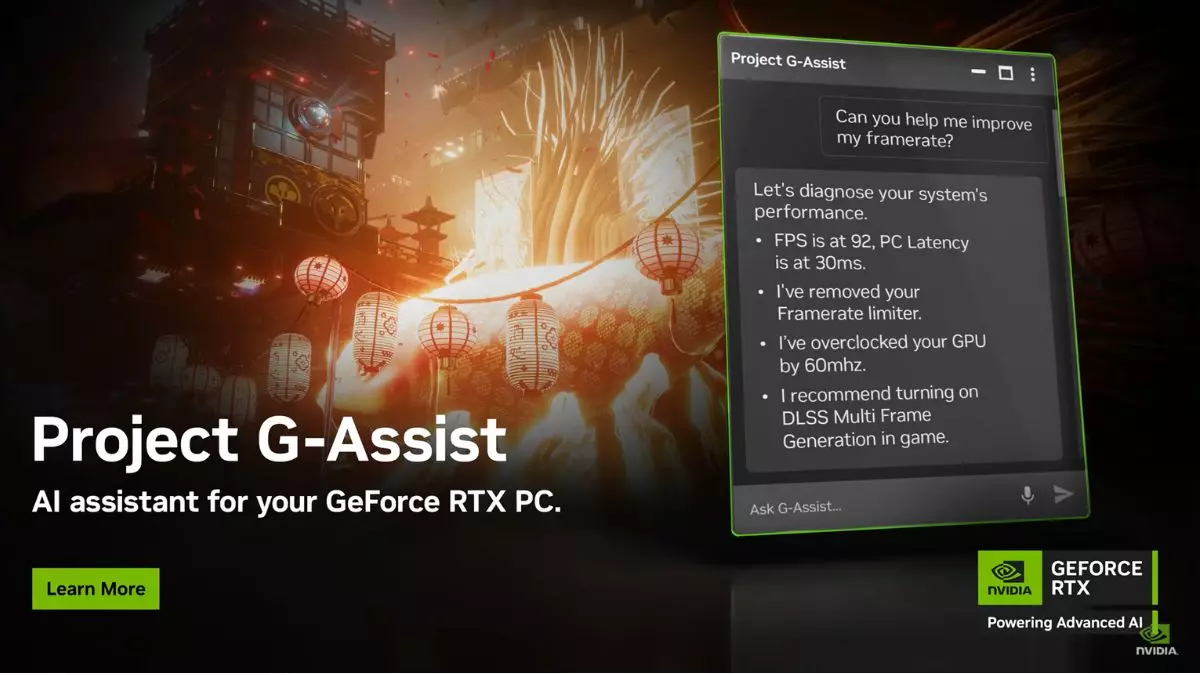On a seemingly ordinary Tuesday, Nvidia rolled out its much-anticipated Project G-Assist, an AI assistant specially designed for desktop PCs equipped with GeForce RTX GPUs. However, one cannot help but feel that this so-called revolutionary leap into a seamless gaming experience is more akin to a half-hearted attempt to ride the coattails of current AI trends. While Nvidia made grand strides in gaming technology over the past years, the release of G-Assist raises critical questions about whether this tool is truly groundbreaking or just another gadget with a flashy belt of pretend functionality.
Localized and Personal: But at What Cost?
The key selling point of G-Assist is its local processing capability, which ostensibly shields user data from unwanted exposure. While many users may applaud this privacy-centric approach, one must ask—does local processing really translate to better functionality? The potential to run locally promises to eliminate latency issues and avoid subscription fees, yet users might find themselves asking, “What exactly am I getting in return?” G-Assist claims to optimize in-game settings and provide performance diagnostics, but how effective can a chatbot be in managing GPU overclocking or tweaking power efficiency without much room for nuance? The assistant may well end up frustrating gamers more than helping them, leading to rather undesirable gaming experiences.
The Limits of Current Functionality
Another glaring shortcoming of Project G-Assist is its support limitations. Currently designed only for desktop PCs, this project marginalizes a significant demographic—laptop users. In a world where mobile gaming is on the rise, this glaring omission results in an AI assistant that appears out of touch with modern gaming trends. Moreover, with its functionality restricted to English language commands only, Nvidia seems to underestimate the diverse gaming community that transcends linguistic boundaries. It’s almost laughable that a tech company of Nvidia’s stature has released a product that lacks multilingual capabilities in a globalized world.
Design and Usability: A Double-Edged Sword?
On the usability front, Project G-Assist implements a convenient shortcut (Alt+G) for launching the assistant, which can be seen as a user-friendly feature. However, we must critically assess whether the overall interface is genuinely intuitive or just another hurdle for gamers who are accustomed to streamlined experiences. Imagine a gamer in the heat of battle, struggling to remember a keyboard shortcut to summon an assistant that may not even provide effective assistance.
What Lies Ahead for Project G-Assist?
In light of the aforementioned drawbacks, it’s essential for Nvidia to consider the difficulties and shortcomings of the initial rollout of G-Assist. Are they prepared to iterate quickly based on user feedback, or will this project be left to languish, much like other inadequately supported tech experiments? While optimism persists in the AI community, the underwhelming launch of Project G-Assist highlights some troubling realities. In the quest for AI-enhanced gaming experiences, Nvidia has so far produced an assistant that might leave more users frustrated than elated, making one wonder if their focus was more on marketing spectacle rather than delivering a truly impactful product.

